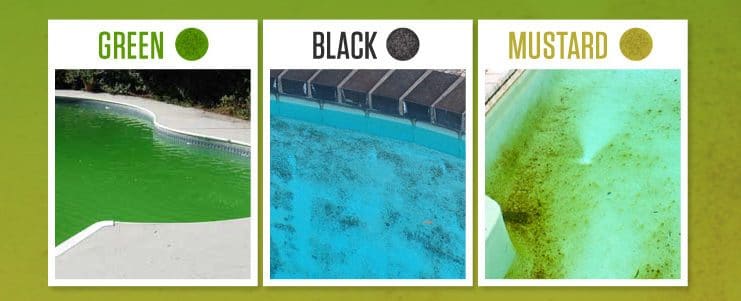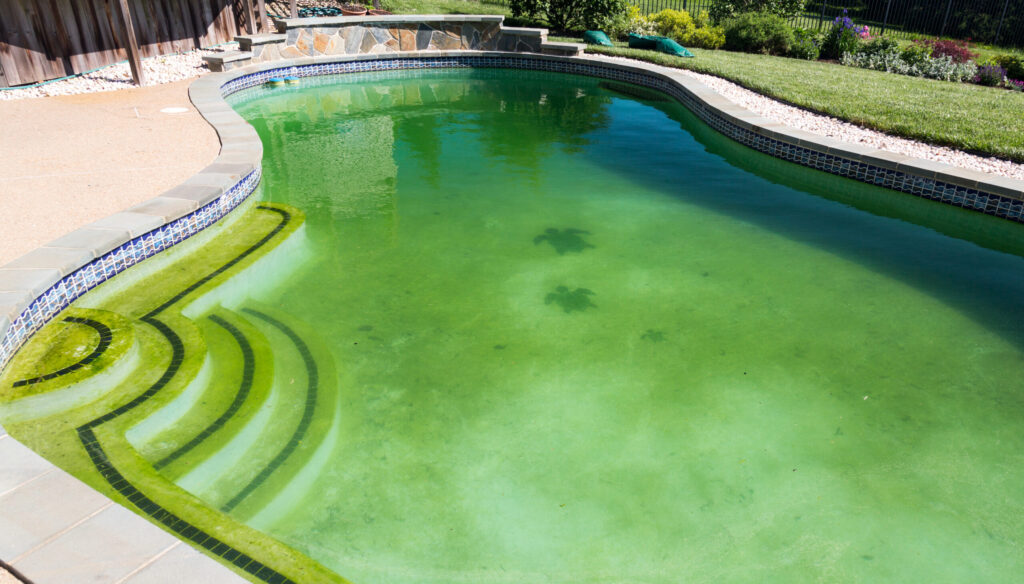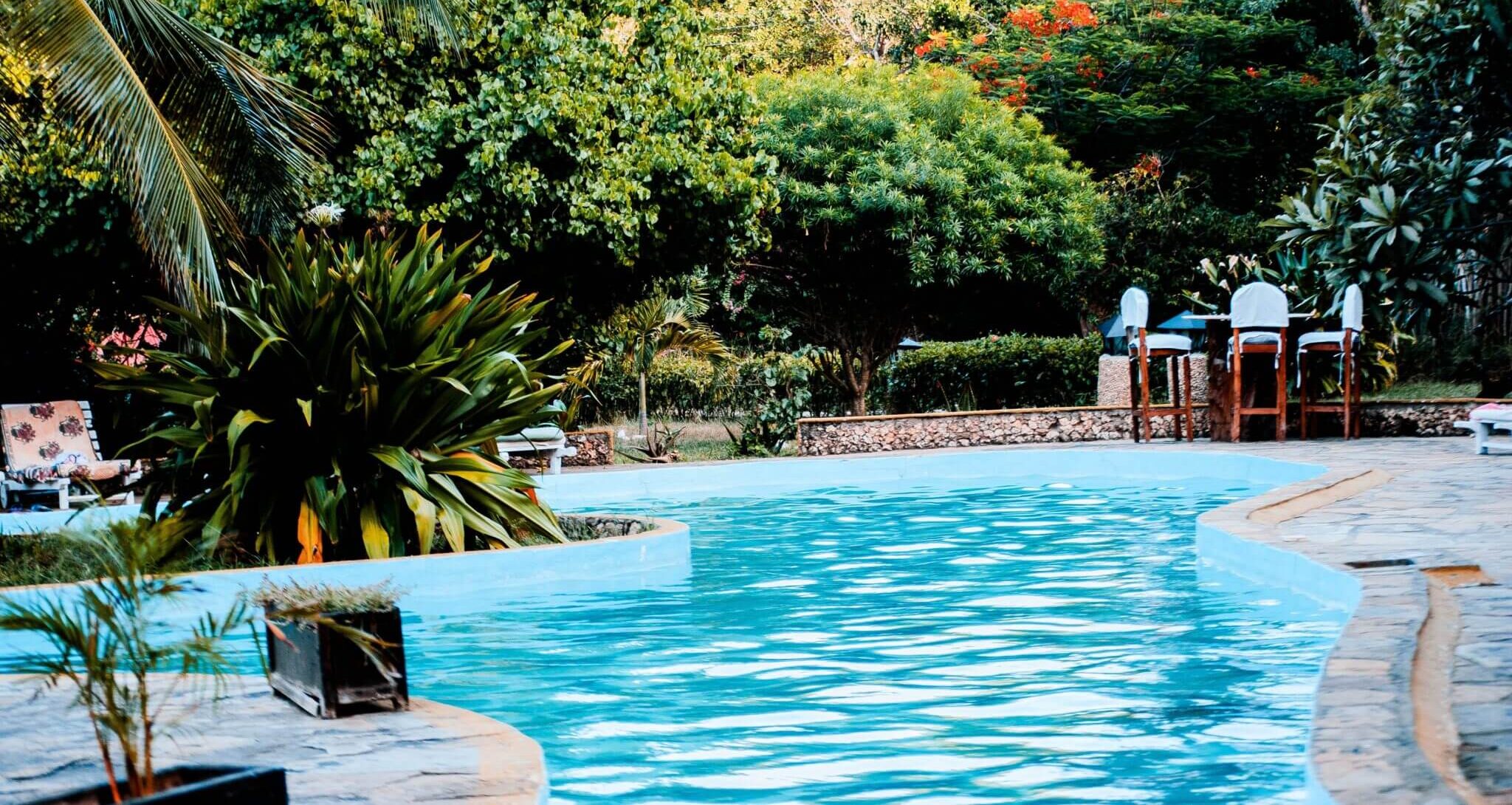Table of Contents
Are you facing issues while trying to get rid of a dirty pool despite using anti-germ chemicals and chlorine tablets? Mustard or yellow-colored algae can grow on your pool walls even if you use harsh treatment powders. So, how to get rid of mustard algae?
Most pool owners face the common issue of a stubborn coating of algae on swimming pool walls and equipment. In this article, you will learn a few simple yet effective ways of keeping your pool free of mustard algae.
Why Do You See Mustard Algae in Your Pool?
Green algae are relatively common, followed by black algae, but why mustard algae in a swimming pool? It is usually found in freshwater and can easily stick on the surface of your clothes, toys, etc. Mustard algae look more like sand or pollen, which is why you may not spot it right at the beginning.
It may have transferred to your pool through the equipment you used in other pools or a lake. Though this type of algae is not harmful, it will undoubtedly contaminate your pool water. The extent can be so much that it may become a breeding ground for bacteria and other microorganisms.
The worst problem is that this type of growth is hard to remove as it is chlorine-resistant. So, how to prevent mustard algae formation in pools?

Prevention of Mustard Algae
The best way of keeping your pool free of mustard algae is not letting it grow in the first place. Yes, prevention is better than cure, and that is what applies here as well. So, how to prevent mustard algae from growing in your pool?
1. Maintain the Alkalinity and pH Level
The foremost step is to check the alkalinity and pH level of your swimming pool water. You need to sanitize and treat the swimming pool water and check for the same regularly. Getting a few pH strips or a test kit can ease this process.
Make sure that the pH remains between 7.4-7.6 while the alkalinity should be between 80-140 ppm.
2. Brush the Pool Walls and Floor
Regularly brushing the pool walls and floor will prevent the formation of mustard algae. Even if there are a few chances of growth or it does grow in small amounts, brushing it off will help immensely.
Doing this will also keep your pool clean, thus, reducing the chances of algae growth. It would be best if you especially brushed the corner spaces near the ladder, pump, filter, etc. Additionally, clean the pool equipment and your bathing suit to minimize the chances of algae formation.
3. Get an Efficient Water Filter
You need to keep the swimming pool water clean at all times, which is done best with an efficient water filter. Additionally, you also need a pump to keep the water circulating. You must run both the equipment for 8-12 hours for a regular-sized pool and more for a larger one.
4. Sanitization
Apart from regular cleaning and filtration, you need to sanitize the water to keep it germ-free and fit for swimming. Pool water can be unhealthy if not cared for, as it is a hot spot for bacteria and algae-formation.
Regularly adding chlorine tablets to your pump and other essential sanitization chemicals can help keep the water heathier.
5. Shock the Pool
Shocking the pool is as essential as chlorinating. It is more of a supreme way of cleaning your pool to kill all the microorganisms residing in the water. Needless to say, it is an excellent method of preventing mustard algae formation.
6. Use an Algaecide
Similar to chlorine and shock treatments, using an algaecide directly aims at killing the algae. It helps to eliminate any chance of algae formation—green, yellow, and black. Thus, you can get an algae-free pool!
How to Get Rid of Mustard Algae – Step-by-Step Guide
Do you see mustard algae in your pool despite all your sanitization efforts? It is time you get rid of the stubborn, yellow growth once and for all. Here is a step-by-step answer for how to get rid of mustard algae.
1. Thoroughly Wash Swimming Equipment
The foremost step that you must consider taking is washing and cleaning all the equipment exposed to the mustard algae. These include your swimming suits, water filter, pump, pool toys, hose, etc. You can clean the objects with a cloth dipped in a bleach solution and thoroughly launder the clothes.
Make sure to clean your equipment thoroughly to keep the sticky mustard algae from getting back into the pool. Once you have cleaned all the pool objects, leave them out until the pool is algae-free.
2. Brush-off the Mustard Algae
You need to brush off the yellow powdery algae from the walls and floor of your pool. With the help of a pool brush, this step will be easy, though time-taking. Do not forget to brush the snug areas of the pool, specifically.
3. Vacuum the Pool
You need to vacuum your pool on the waste mode. After brushing, the algae can stick to the pool filter and pump, making it difficult to remove. You must note that manual vacuuming will be the best option here.
4. Test the Water
Once you are certain of having removed the mustard algae from the water, run a check. You need to ensure that the pH balance of your water is between 7.4-7.6 and the alkalinity between 80-140 ppm.
You can add soda ash to increase or sodium bisulfate to decrease the pH. Doing this will also help balance the alkalinity level. Keep checking the pool water for 3-5 days until you thoroughly get rid of algae.

5. Double-Shock the Pool
Despite rigorous cleaning and water treatment, there are still chances of the mustard algae being present. That is why you need to add twice the amount of shock powder (or liquid) you usually used. Follow the instructions given on the product to know the exact amount.
6. Brush it Again
You can never be sure of something that is not visible to the naked eye. Therefore, you need to continue brushing your pool for 2-3 days (or more) to remove algae altogether. Doing this will also improve the efficiency of your pool shock.
7. Add Another Dose of Shock
Yes, you read it right. It is technically the third dose of shock within a few days, but it is necessary to be 100% sure. However, this time, you need not add extra. A regular dose will do.
8. Increase the Use of Algaecide
Whether you were using algaecide before you spotted the mustard algae or not, you need to level-up. You may have learned how important it is to keep the sticky mustard-algae at bay. Therefore, make sure to add a quality algaecide to your pool at least every week.
Wrap Up
Mustard algae is a powdery growth that can contaminate your pool water if left unattended. It is difficult to spot, hence regular testing and sanitization of your pool is the best way of mustard algae prevention.
Despite all your efforts, you might still end up with the yellow, stubborn algae on your pool walls. In this article, you learn about the best preventive measures as well as how to get rid of mustard algae. So, follow the easy yet essential steps and keep your pool clean and healthy!

